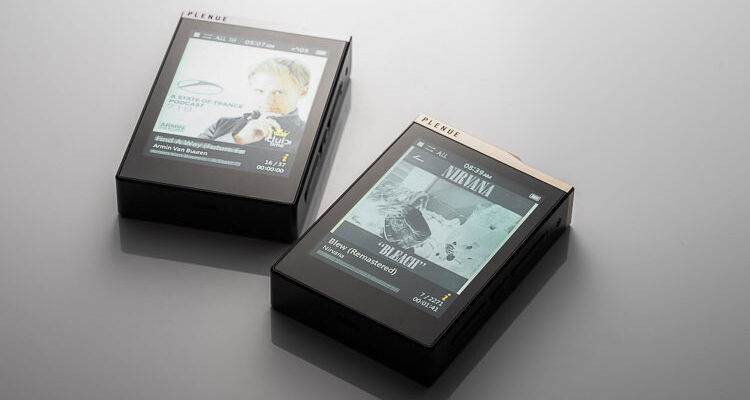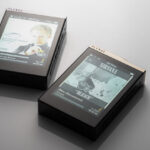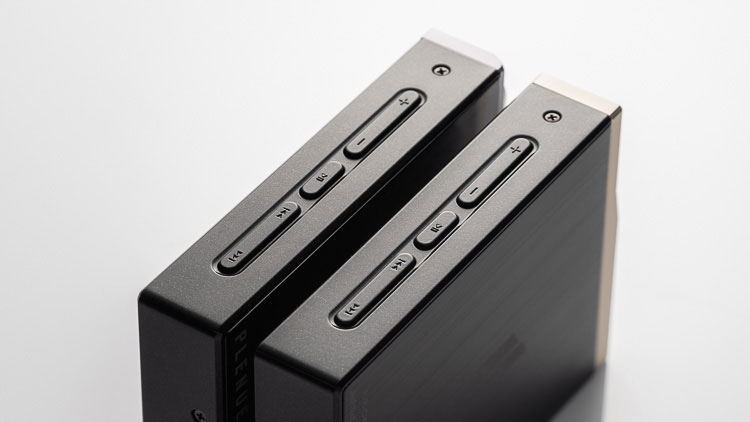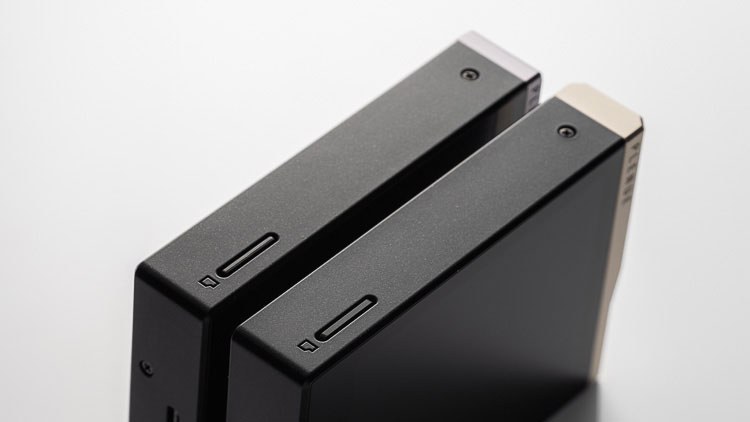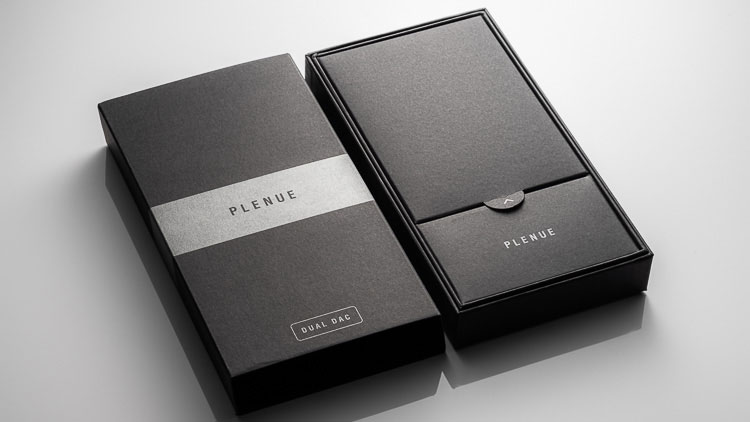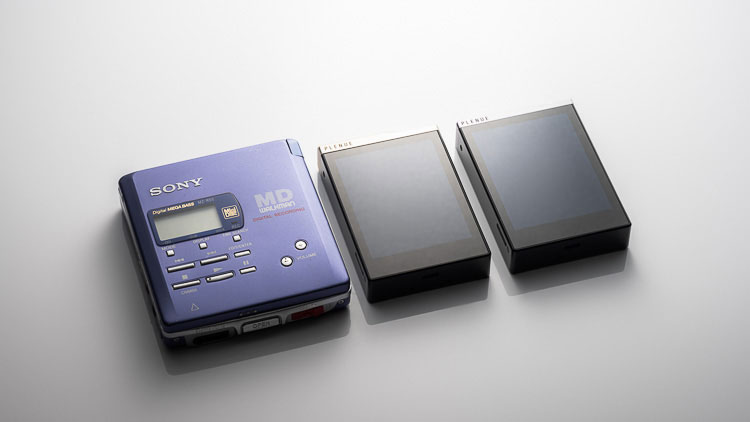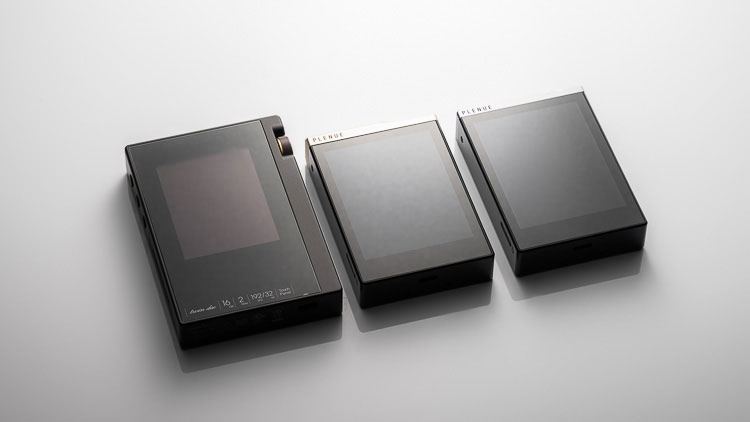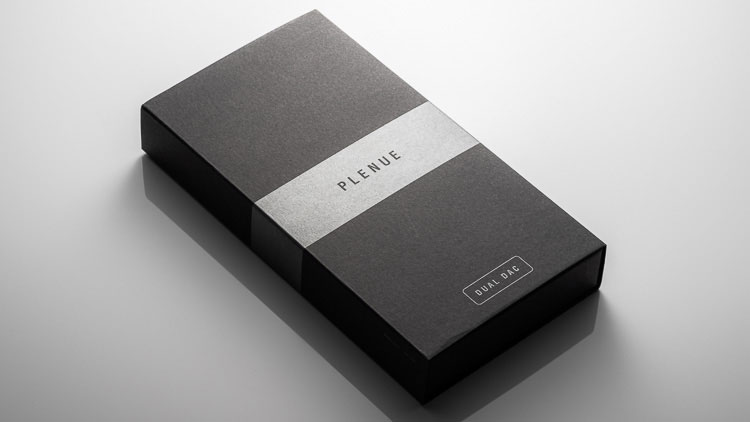The Cowon Plenue D2 is the company’s next generation of micro-portable digital media players, replacing the original D. It is priced at $320.
Disclaimer: The Cowon Plenue D2 sent to us is a sample in exchange for our honest opinion. We thank the team at Cowon for giving us this opportunity.
To read more about Cowon products we reviewed on Headfonics click here.
Note, this review follows our new scoring guidelines for 2020 which you can read up on here.
Cowon has been in the game for about as long as anyone still in it. In 2007 I whinged that the then-current D2 hissed too much and was hard to use. But gosh did its battery last forever.
The Plenue-variety D2 is this year’s follow up to the D, which hit shelves in 2016. The first I fast-grabbed from e-Earphone. The original D had an amazing battery life, decent power, and good performance, but it is totally trounced by the D2. Hell, the D2’s audio performance may well trounce your favorite TOTL DAP just the same.
Technology
I’m not sure if this qualifies under the heading of ‘Technology’ but the D2 is made and designed in Korea. The good of that is that it basically runs in lockstep with Japanese devices for quality of finish. We’ll get to that later.
What’s important now is that Cowon quality spans the generations. Buying into the Plenue family isn’t a gamble. That’s a hurrah for Cowon’s CNC, glasswork, gluing, fastening hardware, and more. As to why I put that in this section- its because what’s under the hood has to abide by the rules of what is outside and fronted to the world.
Under the hood, the D2 packs the following spec and cogs and stuff:
- Hi-Fi Digital Audio Player
- 24bit, 192kHz High Definition Sound
- Dual DAC: CS43131
- High-Quality Balanced Out
- Native DSD
- DAC performance SNR 130dB, THD+N 0.0004%
- Balanced Out 4.0Vrms
- Premium Sound DAC Filter
- Music Playback 45 hours
- JetEffect 5 & BBE+
- DSD(DFF, DSF, ISO), FLAC, WAV, AIFF, ALAC, APE, MP3, WMA, OGG, (and AAC)
- Wide Angle Touch Display
- High-Speed 64GB Internal Memory
- microSD Card Slot
- Compact Size
- Isometric Edge Design
- Matrix Browser
- Sensual Graphic Interface
It supports most popular and audiophile formats out there, including AAC, which for some reason, Cowon didn’t list in the literature. Of course, it supports files from MP3 to DSD. It also manages to do it mostly gaplessly.
Build Quality
Four screws pull the metal and glass together. The D2’s edges are sharply Korean. Find a case. Or bleed. The metalwork and fit and finish of the D2 are top-notch. Even under high magnification, the fine circular tracing surrounding the ON/OFF switch is free of debris and manufacturing defects.
While the D2 is full of quality metal and glass, you’ll scar it’s sandblasting if you’re not careful. Get a case.
Build-wise, my singular complaint is with the single-ended 3,5mm port. The edges reaching out from there toward the plug are sharp and fine, and, after repeated use, are bound to get notched up. It would be nicer if they were rounded like the balanced ports.
Screen
The original D’s screen: low resolution, contrast, and washed-out into a strange metallic sea blue, really dampened the experience. As far as I can tell, the same screen made it into the D2. It’s worse in 2019 than it was in 2016. If you’re a fan of album art, you’ll be disappointed.
You‘ll also be disappointed by how slow the screen refreshes when scrolling and how awkwardly the screen scroll sticks. It times it stammers, at times it sticks so long that when finally it releases, it jumps way ahead. Otherwise, the D2’s interface and load speeds are faster than the original D’s.
Controls
Physical
Along the right side and up from the bottom you’ll find tracking forward/back, play pause, and volume down/up. The same confusion arising from the juxtaposition of volume up (to the plus sign) and tracking forward (to the downward-pointing button) which plagues the FiiO M6 hurts interface consistency in the Plenue D2.
As such, nothing has changed since the original Plenue D. As in the original, the power button lies to the top right, and the headphone jacks pop out of the top edge, single-ended going to the left, and balanced toward the middle. The single micro SD slot fits snugly into the left-hand corner, label up.
I like to slide DAPs and MD units into either my trouser or shirt pockets. Because you need to re-orient or spin the D2 around, it’s not ideal to put into and take back out of the pocket. It’s even awkward to use on a desk because it routs cables away from the body. I disliked the iPhone 4/s for the same reason. The iPhone SE, whose outputs lie to the bottom, slides right in.
My biggest criticism of the Plenue D2 is that too few of the original’s interface issues have changed.
GUI/touch
Like the original, the Plenue D2’s hybrid touch/physical control system is a real mix of good and bad. It is good in that it offers basic hardware navigation functions that some players and smartphones do not. It is bad in that its touch UI is slow, convoluted, and not well optimized to function.
Adjusting play mode, EQ and other sound effects, favoriting, among others, are available only from the currently playing screen. Whilst browsing music the settings menu defaults to search. It’s not bad, but it means that you can’t employ the settings UI to two different uses at the same time. Ideally, you would be able to adjust EQ settings without first playing music, and completely separate to the playback screen.
OS Navigation
The Plenue D2 lacks touch gestures and gets by with generally small touch targets and indicators. If you have normal-sized thumbs, you may have trouble going back a menu, hitting settings, or navigating all but the simplest of menu items. To that, target icons are abstruse, too modern, and stylistically at odds with the market in general and with the D physical UI in general.
From the now playing screen, you have access to a good area of settings (most of which are mentioned above). Outside of it is a manually-indexed navigation tree consisting of Song, Artist, Album, Genre, Year, New Music, and Playlist. Every option dynamically updates with the library, but the final entry is user-created.
Inputs & Outputs
The D2 sports two stellar outputs, one clothed in a 3,5mm single-ended sleeve, the other, tinier one, in 2,5mm balanced TRRS. Holy heck is the D2 powerful. Holy heck does its outputs perform. Holy heck are you going to hear me praise its outputs.
Battery life
Officially, the D2 is supposed to get 45 hours playback from MP3 files and 30 from lossless, but your mileage may vary. I’ve gotten no better than 40 hours from any source, with an average mix between 25 and 33 hours, but I tend to listen and test, listen and test, listen and test, the testing part of which is performed at high volumes.
Storage
64 GB of internal storage gets you a hell of a long way toward packing out a week of lossless 16-bit listening time, or a lot less in 24-bit. The cards I’m using with it are 200GB each and work flawlessly. I don’t know if larger cards work with it or not. If they do: bonus!
Accessories And Packaging
The D2 comes with a USB cable and some literature. That’s it. That’s fine as far as I’m concerned, especially as expensive cases might catapult up the entry price, and cheap cases would detract from the overall quality of the D2. Cowon has kept it simple.
Sound impressions
In short order, the Plenue D2 has become my reference favorite. Sure, you can find more powerful DAPs on the market. But they are few. You may be able to find ones that measure better. I’ve yet to encounter one. Signature-wise, the D2’s mix of cool and warm sound is par for the course among TOTL players. I like it. A lot.
While measuring better than any DAP I’ve had in my office, the D2 doesn’t hiss. And, in every testable metric, it betters its predecessor. In fact, so much better is it than the D, that I consider the D2 the biggest upgrade in a single-family tree that the DAP world has ever seen.
My amateur system shows THD and IMD measurements of 0,0002% and 0,0005% respectively. This works out to roughly 20x and 9x better than the D. On the same test bench, I measure 7dB better SNR and 10dB better dynamic range. The stereo separation between channels is 7dB better than previous. And all of this comes with the benefit of much more power and much less hiss.
Previously, sensitive earphones were real buggers to pair with the D. They hissed. Really sensitive ones might even render audible screen interface calls. The D2 so shields all that from the signal that all is black and quiet. Yes, that includes earphones like Shure’s SE846, which hiss even when plugged into the vacuum of space.
All is not perfect, though. Under extreme load at max volume, jitter jumps way up over unloaded targets, and otherwise pristine signals suck to extreme separation at 2k and 5k with a small mountain of minor joined stereo between them. Can you hear this? I doubt it. Will you be listening to similar loads (Earsonics SM2) at such volumes? No. But when pushed beyond reason, the D2’s output fails there.
And that’s what my measurements say. I see no fault in the D2 at all. Sure, when stupidly pushed, certain portions of the spectrum take an obvious hit. But then so does every audio device, TOTL or no.
Timbre
Listen, unless a DAP is obviously voiced dark or bright, there is very little between them. FiiO’s original X3 is an example of the former. An example of the latter? I’ve yet to find one truly, totally crunchy outside Sharp’s Auvi MD units.
That’s a long-winded way of saying that in practical usage I hear no difference in timbre or other basic presentation to Onkyo’s DP-S1, and even Astell & Kern’s AK380. It’s neutral and bright as can be where called for. Its lows go just as low as the signal requires. It is transparent.
Staging
I’ve gone back and forth on this issue, but after many years of watching the market, reading reviews, and listening, I have come to this conclusion: what a person considers to be a wide or deep or long soundstage, is 100% subjective. That is, if you find that channel bleed (crossfeed) helps create a stereo and other staging, you can get that feeling with the Plenue D2, but you have to toddle with reverb and 3D Surround settings to do it.
Because the D2 lacks certain audio features such as crossfeed or joint stereo settings, you’ll have a harder time getting the Plenue D2 as opposed to the DP-S1 to sound like a FiiO X3. What it’s got is a good selection of direct DAC hardware features: fast/low-latency, fast/phase-comp, slow/low-latency, slow/phase-com, and non-oversampling. To that, it’s got Cowon’s vast array of BBE and other sound adjustments, which make the D2’s sound almost infinitely sculpt-able.
If you want the best in separation as per measurements, well, the Plenue D2 has you covered. It nails stereo separation under load, giving you at high volumes one of the most intensely atomized separations between left/right channels out there.
In other words, that’s no-bleed, full tilt headphone. And if no-bleed, full-tilt is how you interpret soundstage width, you’ll be hard pressed to find the D2’s better at its price point. If less separation is your thing, you’ll easily be able to emulate it with a DAC setting macro.
Matchability
Okay, so the Plenue D2 has almost as much power as the AK380 out of either of its outputs. It’s got as much power as the Sharp MD-MS100 MD player. It can almost burst professional-grade earphones.
In balanced it is even more powerful. It will get 600Ω headphones super loud, but not quite as loud as some home amps out there. Burson Fun aside, it is more powerful than any home unit I have. It’s tiny and super powerful. I imagine that a bunch of recent TOTL DAPs are roughly on track, but for this size, the D2 is in a special minority.
The FiiO M6 is less powerful than an iPhone SE. A Sony ZX300 is about as powerful as an iPhone SE. The Plenue D2 is at least +6dB more powerful than that, single-ended. And the AK380 isn’t noticeably or measurably more powerful. That’s serious power. If you find that you need more power, you might have the Headphone setting off. Engaged, the D2 slams like Mjolnir.
That’s to say that you can plug just about any headphone into it an get amazing performance, irrespective sound preferences. You can then tune the D2’s output to reverb, or EQ settings you really like to get a vast array of different sounds from it. Ergo: with few exceptions, matchability issues will be personal.
Noise
None at all or so little that I can’t detect it through the most sensitive earphones on the planet.
Select Comparisons
The only thing I’ve tested that comes close in performance, as well as market segment, is Onkyo’s DP-S1, itself a freaking awesome DAP. Both have sluggish graphical interfaces, but the DP-S1’s software is a little easier to use. The DP-S1 sports dual card slots. Both are noiseless and powerful and test really good.
I prefer the Plenue D2’s size, and for absolute testable performance, the D2 is king, though by a slim margin. I really wish that Cowon would get to work wiring the D2 for Bluetooth, and fix their GUI. If they can do that, I wouldn’t recommend the DP-S1 over it. As it is, the DP-S1 has more features and performance close enough to recommend it over the D2, though it really is back and forth.
I also really wish the D2 had Bluetooth.
Our Verdict
The original D was good. The D2 is awesome. In fact, it is now my testable benchmark for amps, and all downstream equipment as well as hard to drive earphones and headphones. It sounds great, has good to great battery life, looks good, has a relatively good hardware interface, and fits in the pocket.
It is nearly the perfect DAP, where P could also stand for ‘portable’ in a market-led increasingly by devices built originally to do away with the bulk and complication of a portable audio stack, but which are now as big as a good DAP and amp from the day.
Unfortunately, its GUI isn’t good. Finally, if only it had Bluetooth- that would kill it.
Cowon Plenue D2 Specifications
- Codec Support: DSD(DFF,DSF,ISO)/FLAC/WAV/AIFF/ALAC/APE/MP3/WMA/OGG
- Output Impedance: 1Ω Unbalanced /1.5Ω Balanced
- Output Level: 2Vrms Unbalanced / 4Vrms Balanced
- SNR: 125dB Unbalanced / 130dB Balanced
- THD+N: 0.0004% Unbalanced / 0.0005% Balanced (24bit, 48kHz)
- Output: 3.5mm / 2.5mm Balanced
- DAC: Dual CIRRUS LOGIC CS43131
- Internal Memory: 64GB
- Expandable Memory: MicroSD up to 192GB
- Battery: Lithium polymer
- Battery Life: 45 hours (MP3, 128kbps) / 30 hours (24bit/96kHz, FLAC)
- Charging Time: Approximately 3.5 hours (with 5V/1A or higher micro-USB DC adaptor)
- Dimensions: 53.1 x 79.2 x 14.9 (mm)
- Weight: 97g

